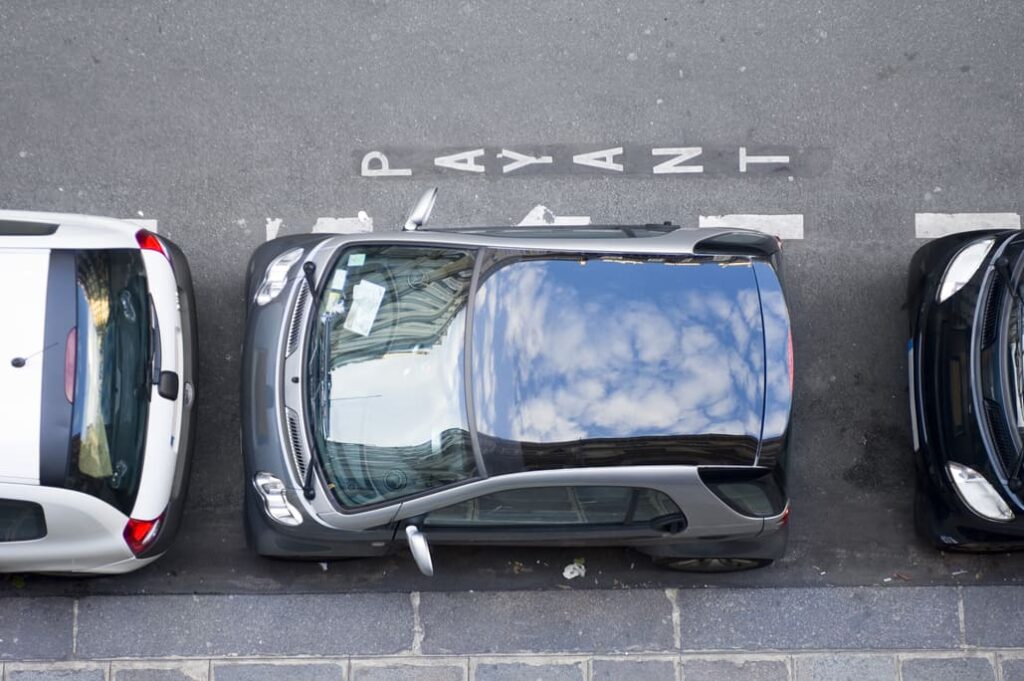26 September 2019 Concept Car
When we’re talking about trim levels, we’re not speaking about shaving. Rather, trim levels are a great way of discussing which car is best for you. Although trim levels have, in some form or other, existed since the dawn of the automobile, they’ve become increasingly important over the past decade.
Is that a good thing?
Certainly, trim levels have created more choice and flexibility for drivers. But they have also made buying a car more complex and, to a degree, outright confusing.
Let’s investigate what trim levels are – and how you can use them to your advantage.
Let’s imagine you are looking for a new car. What factors into potential candidates?
Usually, you’ll first come up with makes that you consider suitable. The choice of manufacturer can be swayed by many different factors: Pricing, whether or not you’ve made positive experiences with the brand in the past, and just generally whether or not you have a positive image of it.
Secondly, you’ll probably single out models that you consider good matches. Possible criteria are your needs in terms of the number of doors, head room, as well as passenger- and trunk space. To sum it up, we’re talking about the body of the car and its dimensions.
In a final step, you’ll want to go into more details. Which engine is best suited to your needs? What kind of safety features do you consider essential? Is fuel consumption an important consideration for you? Or do you place the emphasis on a powerful driving experience?
The latter considerations deal with the extras of a car. This is where trim levels come in.
A trim level denotes a particular configuration of extras which are inseparably connected. All of these are added to the cheapest model available, which is generally called the base version.
So, one trim level could feature a more sporty look and a rougher suspension as well as body contoured seats and a powerful engine. Another, on the contrary, could contain the full safety package, family friendly accessories and an ecological engine with excellent fuel consumption performance.
As Autoblog puts it:
“The trim typically categorizes the specific performance level, packages, options, features, and extras on the base vehicle. Each trim level comes at a different price, meaning a trim somewhat determines how nice a car is.”
Or, according to Wikipedia, in an even more simply worded definition:
“For a given car model, the trim level denotes which equipment and features are included as standard.”
Not quite.
For one, option packages are bundles of items aimed at a very specific purpose. The safety package, for example, will contain additional technology and features geared towards more secure driving. An airconditioning is another item, which is often requested as a stand-alone upgrade to the base model.
Trim levels, on the other hand, are far more expansive in scope. They define combinations of extras which, together, create a car with a very distinct feeling. It’s like the difference between buying a few songs online (option package) or getting a seamless, inspiring mixtape from a talented DJ (trim level).
Or something along those lines.
To add to the confusion, some extras are only available as part of certain trim levels. Which means that in order to get what you want, you may have to get plenty of stuff you have no need for as well.
Manufacturers are offering more trim levels than ever before. In the past, there may have been 3-4 different trim levels, depending on the model. Today, there can be up to 15 separate trim levels. That’s an amount which can confuse even the most experienced salesman. Let alone an average driver who just wants to buy a car with a few nice extras.
However, there’s a very good reason why car companies are making things this hard for prospective buyers.
We’re living in the age of choice. An age where we want our products to be tailored to us, to come in an endless array of possible colours and with exactly the specifications that we would like.
That’s great.
Each additional extra is adding a lot of complexity to the production process, slowing it down, making it more prone to errors, increasing the pressure on subcontractors to be able to deliver each item exactly on time.
Trim levels are a sensible way to reduce this complexity at least a little bit.
They bundle extras into repeatable configurations. They assure that these components are working together in the best possible way. This assures you’re getting exactly the right performance out of your car. With option packages, you may be putting together a patchwork car which never fully lives up to its potential.
When Kevin Doyle from American organisation Consumer Reports visited a Subaru showroom, he asked for detailed information on the different trim levels of the Forester.
What he found was that there was not a single combination of features which had exactly what he wanted:
It would be easy to regard these eccentricities as proof that trim levels are making life harder for you. That would be unfair, however. Rather, trim levels can make things easier for you as well and will often be cheaper than adding a wealth of extras to the base model. Just take the few absurdities for what they are and exploit them to your advantage whenever you can.

One thing you should be aware of, though, is that manufacturers are using trim levels to increase their profits. As soon as you start buying more than the base trim level, you need to remain alert. It is tempting to opt for a higher trim level, even though you don’t really need most of the additional items it comes with.
Writes Kevon Doyle:
“The number of trim levels on some models has doubled over the past 15 years. And the price difference between the base and the top trim levels has stretched to the point that a front-wheel-drive 2019 Kia Sorento SUV can start at a budget-friendly $25,990 and run all the way up to $44,690, which is flirting with the cost of a luxury SUV.”
Now imagine what those almost $45,000 could buy you: A far more advanced car by a far more prestigious make! This is why it makes sense to compare the top trim levels of a cheaper car with the base models of a more expensive ones.
So, how should you approach choosing the car and the trim level that’s right for you?
Experts have suggested two approaches, which are curiously each other’s exact opposites.
The first suggestion is to compare only the base levels of different models with each other. This is an alluring proposition in the sense that it allows you to compare cars that will probably be very similar to each other in terms of their accessories.
However, as Autotrader noted, “you may leave out models that lack a feature you want — a backup camera, for example — just because it’s not included on the base model. (…) It’s probably best only for those who don’t need a lot of features and want to car-shop quickly.”
The alternative is to compare just the top trim level cars. These ‘fully loaded’ models will give you everything you can get out of that particular model. It’s certainly a great approach if money doesn’t matter to you. If it does, however, you’ll want to take a more nuanced approach.
Instead of taking the radical approach mentioned in the previous paragraphs, we’d like to suggest you follow a few sensible recommendations. These will help you select exactly the right trim level for you.
Some, like Consumer Reports, consider the basic trim level as a mere gauge. They don’t think manufacturers actually expect anyone to buy it and claim that very often, it will not even be available from dealers.
However, as The Journal wisely point out, “not all base level trims are created equal”. After all, some higher market vehicles already come with plenty of great extras. Either way, it does make sense to at least use the base model to arrive at a clearer understanding of what you truly want.
There will be certain items which you consider indispensable. These may include the safety package and even an airconditioning in certain cases. Even a basic level CD player or radio is pretty much an essential item from our point of view.
Then, there are wants, which are things that can add to the experience and value of the car but may not be exactly fundamental.
Finally, we all have our dreams and desires, but should not let them cloud our judgement. Do you really need full leather seats?
Certainly, with some cars, a higher trim level can improve your resale chances. However, some buyers prefer the most stripped down version of a particular model they can find in order to keep the price down. So this is a knife that can cut both ways.
Very expensive trim levels are usually a waste of money and will not recoup what you paid for them.
This is actually one of the things a dealer will regularly accept. He could, for example, sell you a higher trim level if it contains a single item you really want, but mark it down a bit if there’s too much you don’t care for.

It is possible, but unlikely that you’re going to stick to that basic trim level or even the one above that. In the end, we all want a little bit of luxury to make a hard day more agreeable and driving a little more fun.
Make sure there is some wiggle room in terms of costs, therefore, especially if there are extras you feel strongly about.
Whatever you do, come prepared. The Subaru Forester, for example, comes in 19 different configurations. Fighting your way through that model alone can take days.
26 September 2019 Concept Car